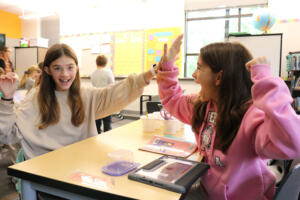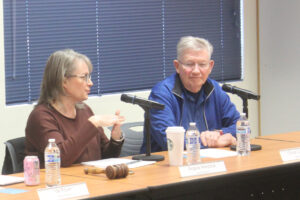Gause students learn about problem-solving
Gause Elementary School fifth-grade students recently learned about engineering design processes in an attempt overcome a unique challenge.
Students in Eric Engebretson’s class were given a hula-hoop, a flat bike tire, a plastic container half filled with beans, an empty plastic container and several rope strings, and challenged to use the materials to pour the beans from one container to the other, but not have any body part leaning inside of the hula-hoop area and not drop a single bean.
Armed with iPads to draw and share their design ideas and record their attempts, the teams of three and four students tested their theories of how to accomplish the task and solve the problem within the allotted 45 minutes.
Once a team had an idea that worked, its members were invited to the middle of the room to prove their idea. The beans were substituted with pretend “toxic popcorn,” and if the students leaned over the hula-hoop or dumped the corn, “Washougal” would be destroyed.
“I wanted students to understand that there is a process to solving a range of problems and that the process is real and applicable in the real world,” Engebretson said.


